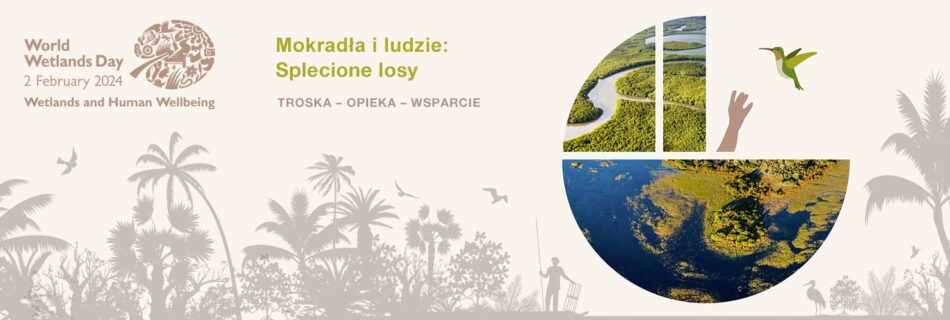The Convention on Wetlands of International Importance especially as Waterfowl Habitat, known as the Ramsar Convention, was signed in Ramsar on February 2, 1971. To date, 172 countries have become its members, designating 2,503 wetlands of international importance. Among them are 19 Polish areas with a total area of 152,964 hectares. Poland joined the Convention on March 22, 1978.
Discover Ramsar sites in Poland.
Parties to the Convention, including Poland, are obliged to:
- designate appropriate areas for inclusion in the list of wetlands of international importance
- implement plans to protect wetlands included on the list
- rationally use all wetlands
- international cooperation in implementing the Convention
The Ramsar Convention aims to protect and sustainably use all wetlands through national and local action and international cooperation. These actions contribute to achieving sustainable development worldwide.
The anniversary of the Ramsar Convention is an opportunity for all nations and people to come together to raise awareness, appreciate and take action for wetlands. Celebrated annually since 1997, the holiday not only commemorates the signing of the document 53 years ago in the Iranian city of Ramsar, but above all, it symbolically gives a voice to wetlands to find a place in our consciousness and receive the attention they deserve.
Wetlands and counteracting the effects of drought.
In counteracting the effects of drought, it is important to protect biodiversity and aquatic and water-dependent ecosystems. Among such areas requiring protection, the restoration of which will strongly contribute to mitigating the effects of drought, are wetland areas. Wetlands, peat bogs and marshes are extremely important for the environment due to their ability to store large amounts of water, as well as carbon resources. The organic matter they consist of is the main indicator of soil quality and has a positive effect on their physicochemical properties. Among other things, it determines the ability to retain nutrients in the soil, improves infiltration properties, limits evaporation and increases the ability to store water, thanks to which the soil structure is maintained at an appropriate level.
In the context of the currently observed climate changes occurring in recent years in the world and in Poland (drought periods and other extreme hydrometeorological phenomena related to accelerated water circulation in the environment), wetland areas are gaining special significance. They play not only an important role in retaining water and absorbing CO2 contained in the atmosphere, but also contributing to maintaining biodiversity and protecting valuable plant and animal species.
Wetlands of various types stabilize the outflow and flow of rivers, and also protect water from excessive evaporation. Floodplain wetlands take in the overflow of water from streams and then slowly release the water. Marshes and peat bogs are areas where a permanently high level of fresh water is maintained – even up to 95%. Thanks to their particular structure, the outflow of groundwater and surface water is inhibited by them, and water can be stored just as it would be absorbed by a sponge. Water from melting snow, instead of flowing directly into the river, is retained for longer in marshes, from which it can slowly drain throughout the summer. This prevents rivers from rising in the spring – the more marshes there are in the area from which water flows into the river, the lower the risk of flooding. The slow drainage of water is also associated with protection against drought. During droughts, this water is slowly released into the environment, which helps plants survive this difficult period.
In Poland’s transitional climate, about 30-40% of precipitation comes from water circulating within the continent. Wetlands actually “produce” precipitation. Evaporated water returns as rain (with convective precipitation, such as short-lived summer thunderstorms) and as fog and dew. In the case of rain, it will not always fall on the same area from which the water evaporated, because clouds move with the force of the wind, but on a regional scale, wetlands create a “hydrological pump.” The more wetlands in the landscape, the lower the risk of drought.
We invite you to join the celebrations of World Wetlands Day 2024 and to familiarize yourself with the information materials available on the websites:
Official website of World Wetlands Day by Ramsar – 2 February – World Wetlands Day
Ramsar (Ramsar Sites Information Service).
Światowy Dzień Mokradeł 2024 – Ministerstwo Infrastruktury – Portal Gov.pl (www.gov.pl)
Poland | The Convention on Wetlands, The Convention on Wetlands (ramsar.org)

 PL
PL

